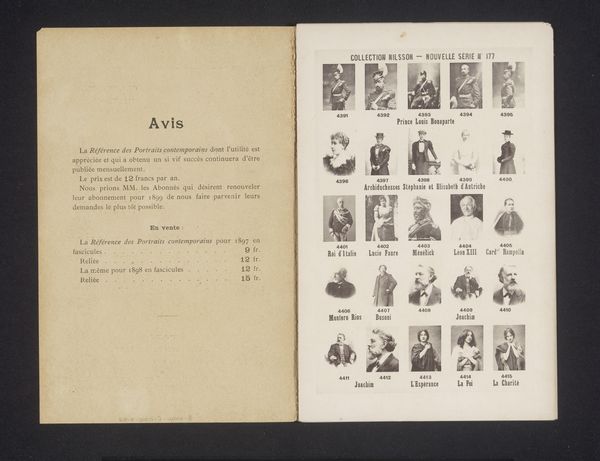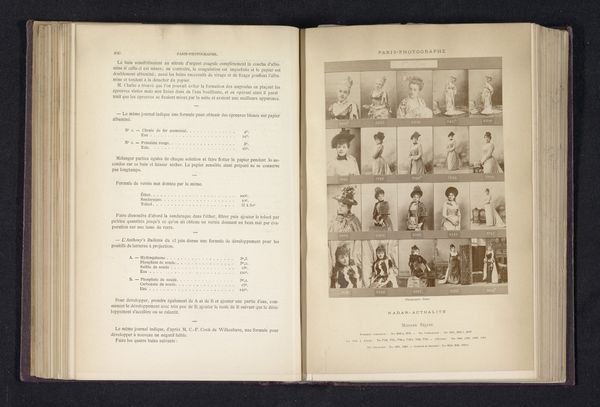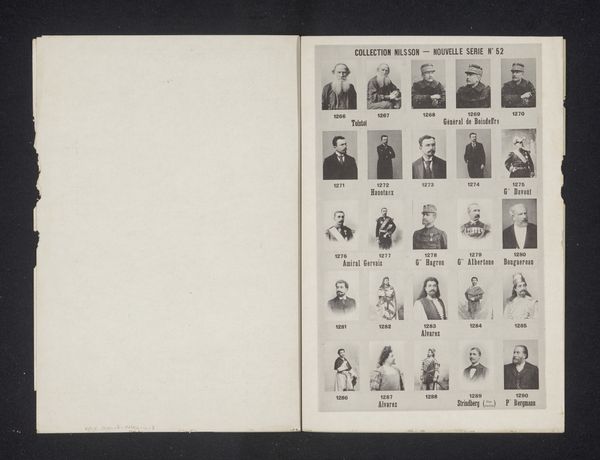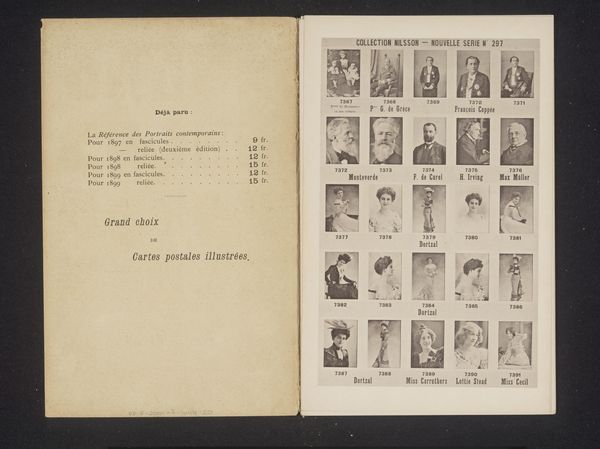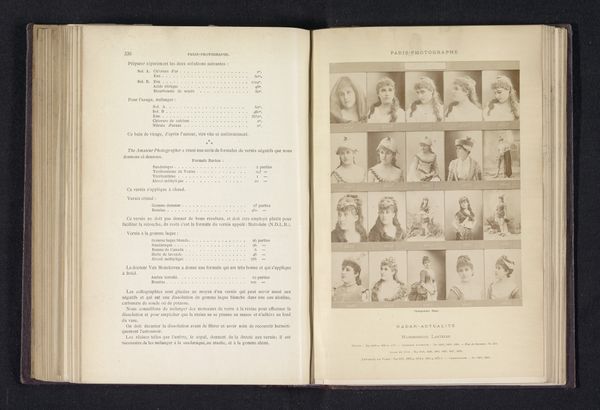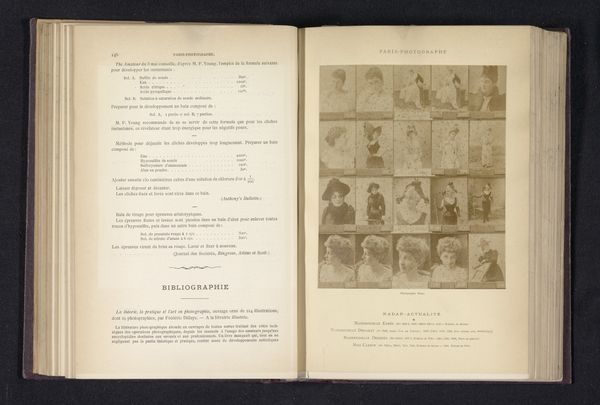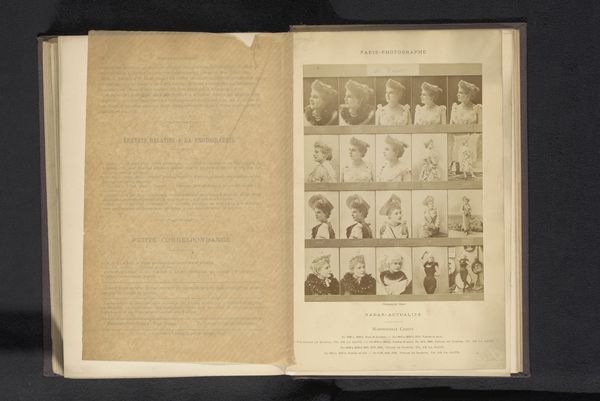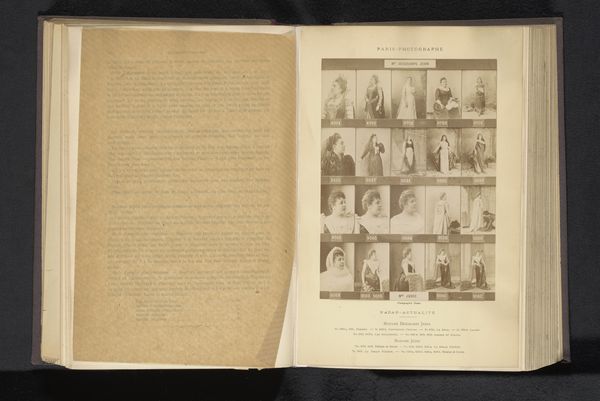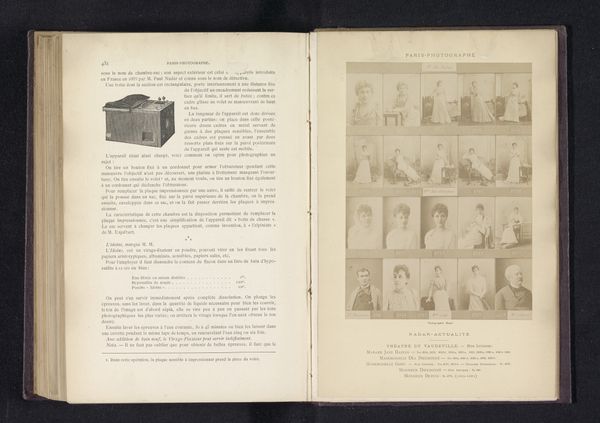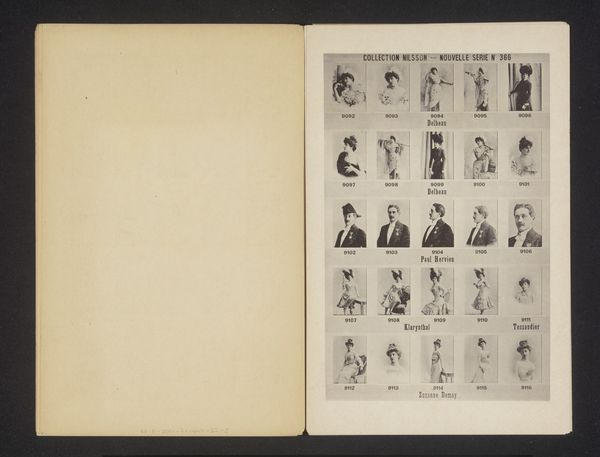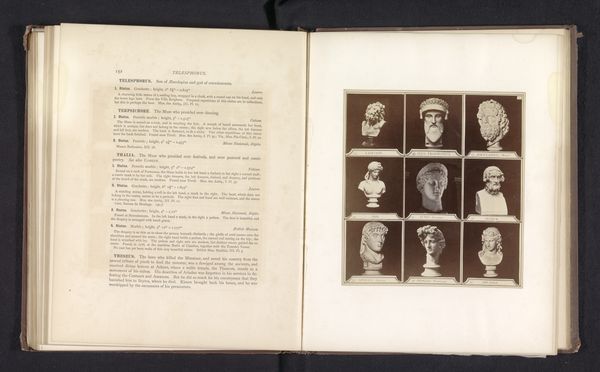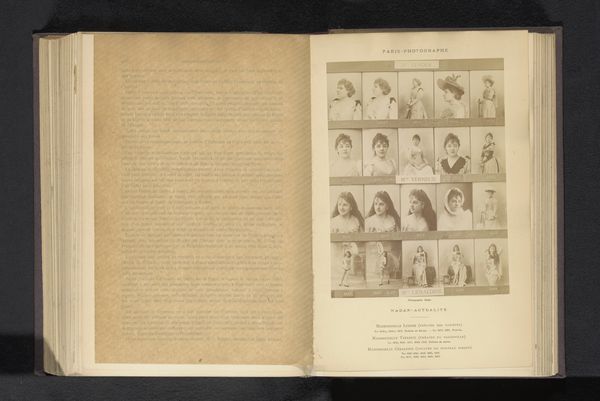
print, photography, collotype
#
portrait
# print
#
book
#
photography
#
collotype
Dimensions: height 235 mm, width 153 mm
Copyright: Rijks Museum: Open Domain
Curator: Here we have a fascinating item: a page from "Collection Nilsson, Nouvelle Série No. 209", showcasing portraits predating 1899. The portraits were captured using photography, then reproduced in a collotype print format. Editor: My first thought is that the arrangement feels incredibly utilitarian. The portraits, although distinct, are presented almost like product samples. A gridded display of the late nineteenth century’s prominent figures packaged for consumption. Curator: Precisely! It serves as a directory of notable individuals. It reminds me how visual imagery was disseminated and consumed, especially in the world of theater and literature. The presence of names like "Jerome K. Jerome," for instance, anchors it in that cultural landscape. They act almost like totemic representations of particular archetypes. Editor: The materiality, I find equally compelling. The collotype process, enabling multiple reproductions, makes me think about democratization of the image. This technology allowed these images of prominent figures to be widely distributed. Were these unbound sheets, like proof pages, circulated widely, or kept with others in bound editions? Curator: Given the text included here on the left side of the page it seems these are most likely collected into “fascicules”, almost like a magazine or partwork that a reader would bind together later. And while it democratizes access in one way, doesn't it simultaneously reinforce hierarchies? Those selected for portrayal, memorialized through image and print? Editor: Certainly. Even with its apparent accessibility, we still have to examine who has the authority to decide who’s worthy of depiction. Who's choosing what to showcase and the means of distributing these portraits? It reflects both technological progress and the persistence of societal structures of celebrity and recognition. Curator: Yes, by engaging with an object like this one, we aren’t simply observing portraits; we're studying how identities and their corresponding symbols were mass-produced and made consumable. What we are witnessing here is collective memory taking form in printed matter. Editor: And on this particular format, it tells us of the means by which late nineteenth century visual economies were structured. These images—objects circulated widely within their social, economic, and technological conditions—continue to echo to this day.
Comments
No comments
Be the first to comment and join the conversation on the ultimate creative platform.
